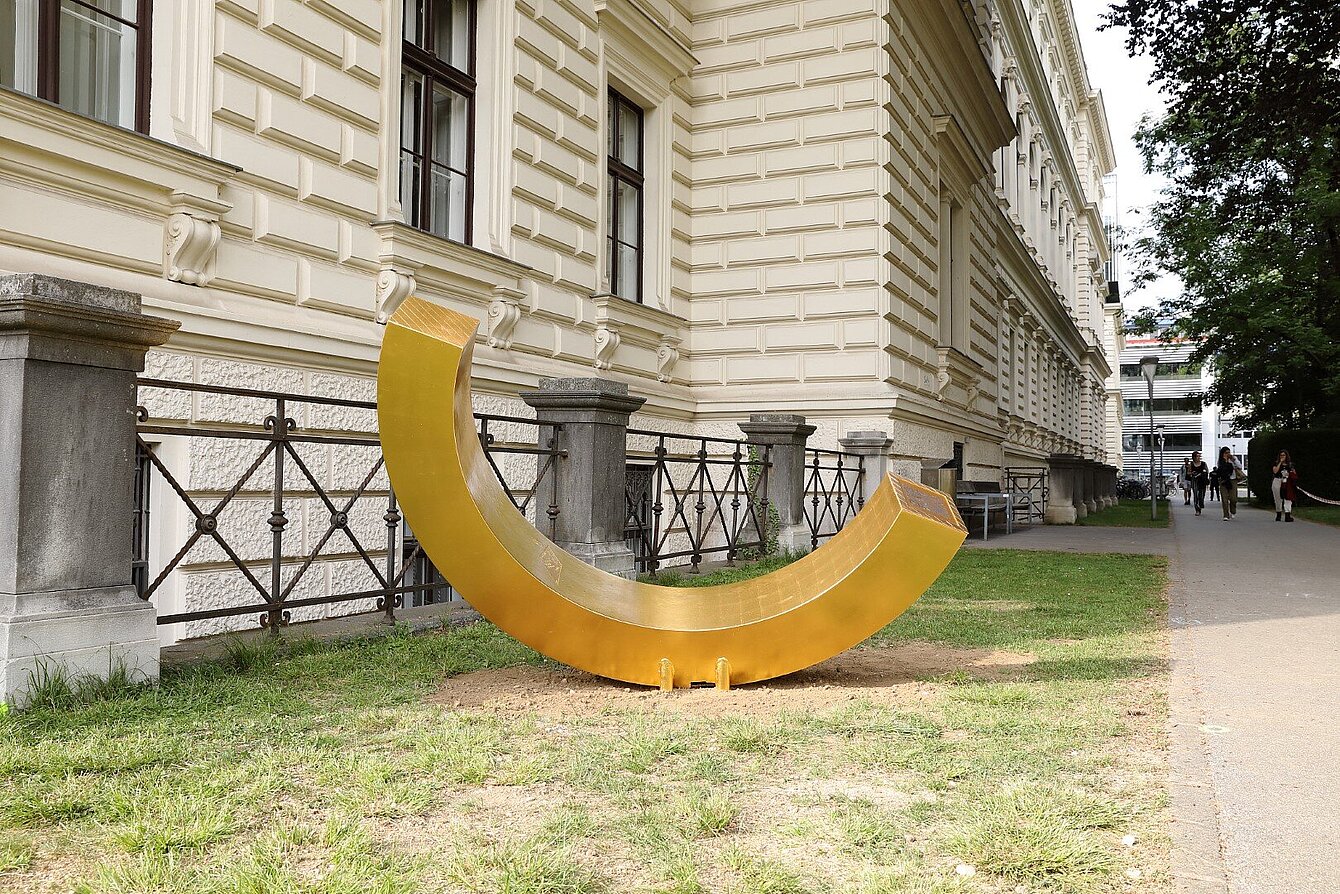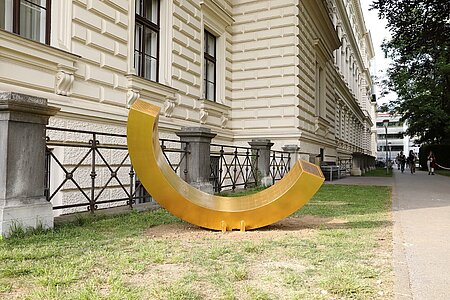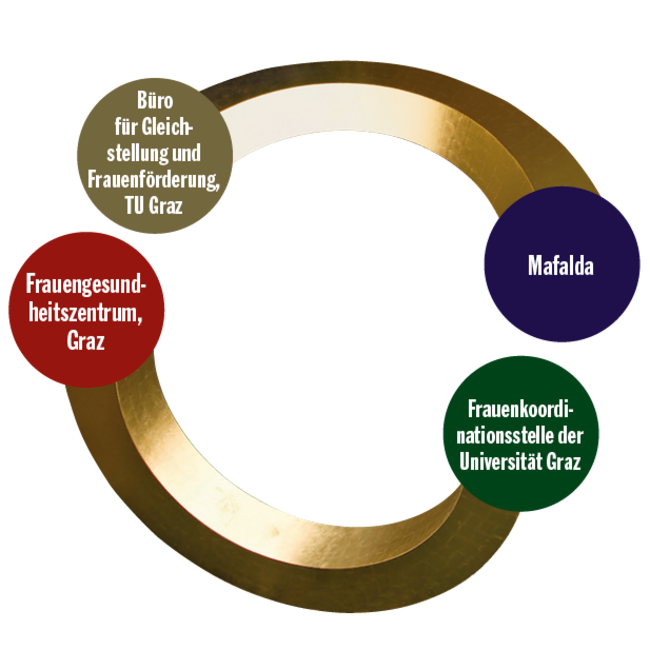The monument to Dr. Oktavia Aigner-Rollett, the first female physician in Graz, is a two-part, gold-plated ring sculpture made of steel. The inner diameter of the ring corresponds to Aigner-Rollett’s height. Each part of the ring sculpture is placed at a certain inclination to the earth’s surface, which corresponds to the sun incidence angle at the hour of her birth and the one at the hour of her death in Graz. Moreover, the ring sculpture – like other pieces of jewelry made of precious metal – features a “hallmark” that contains Aigner-Rollett’s date of birth and death.
The sculpture Ring of Honour was created in 1993/97 as a pioneering reinterpretation of a memorial sign in public space. On the initiative of the Institute for Art in Public Space Styria, the work was restored and technologically updated in 2008. In the course of the new installation in 2022, the monitors at the interfaces were replaced by engraved QR codes. These direct visitors to further information about Aigner-Rollett and at the same time serve as an interface for current women-specific concerns.
Each ring half stands alone on a public square in an area where Aigner-Rollett worked. One of these places is the University of Graz, where she was one of the first female medical students to receive her doctorate on December 5, 1905. At the same time, the square at the Pre-Clinic on Harrachgasse is her birthplace. The second place of activity is the area at St. Paul’s Gate, where the General Hospital and the Anatomical Institute were located back then. Aigner-Rollett was the first woman to work as a doctor at the General Hospital. The interfaces of the ring halves are information carriers. Now marked with a QR code, they act as an gateway leading into virtual space to current institutions that support women's and girls' concerns. In this way, the tribute to the pioneer becomes a help for those living now, in the sense of the honoured.
Locations:
next to the main building of the University of Graz, Universitätsplatz 3, 8010 Graz
Maria-Theresia-Allee, next to St. Paul’s Gate, 8010 Graz























